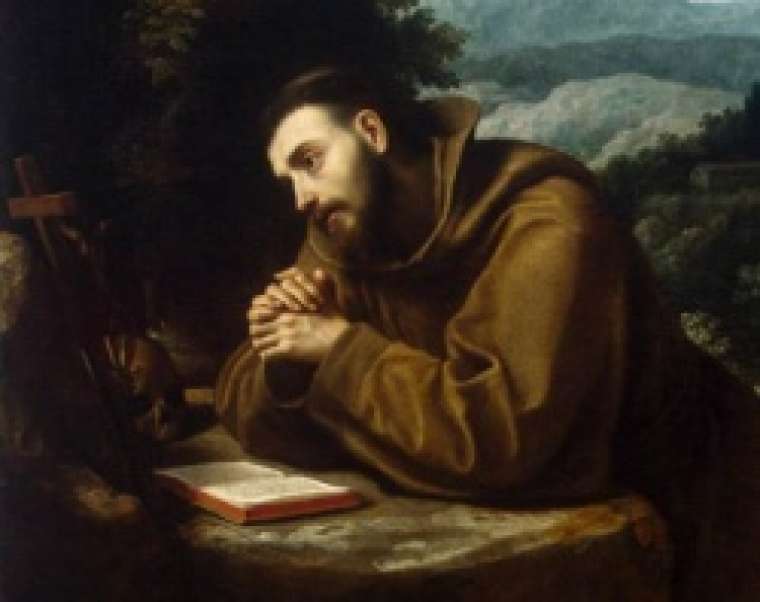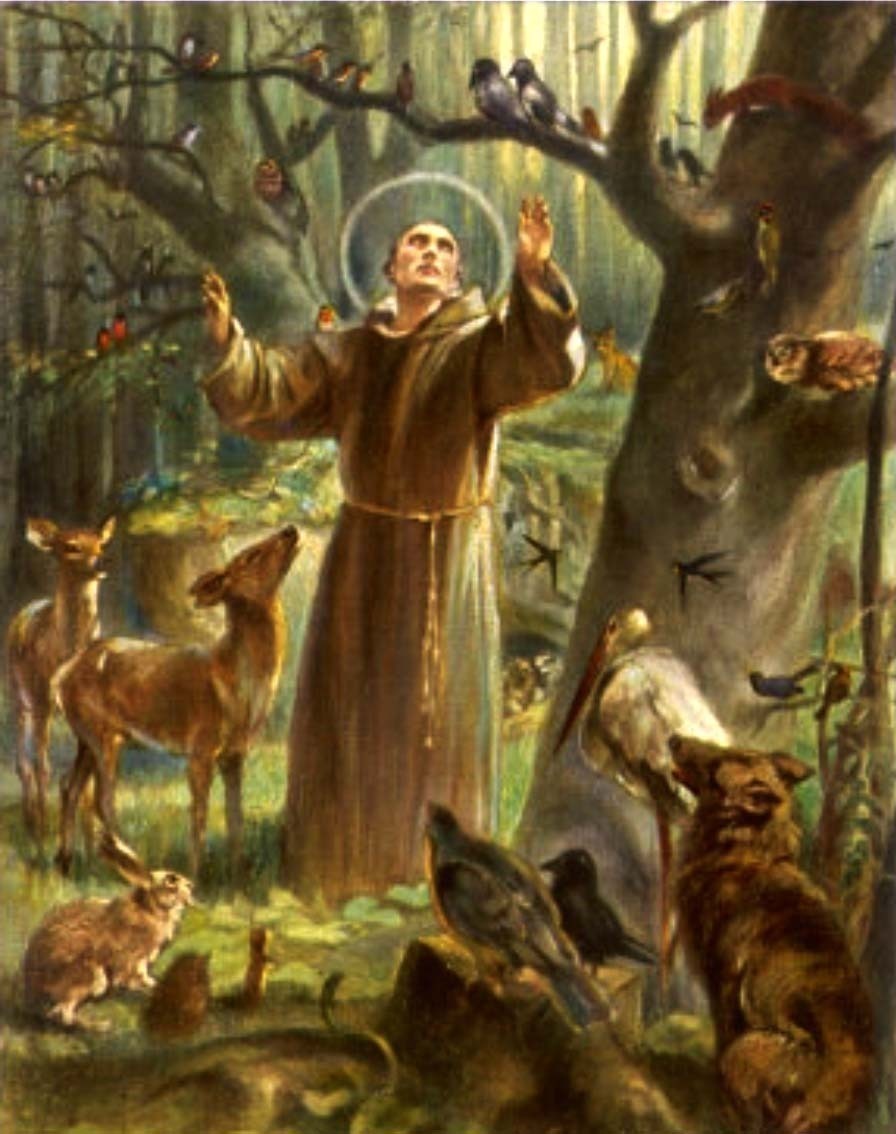St. Francis of Assisi was known as Giovanni di Pietro di Bernardone. He was the son of a wealthy silk merchant. His father Pietro di Bernardone dei Moriconi, was Italian and his mother, Pica de Bourlemont, was a noblewoman from Provence. Giovanni enjoyed his life being wealthy. He loved to party with friends, loved to drink and have fun. He dressed lavishly. Like any young man.
In 1202 Giovanni joined the military expedition against Perugia, there he was taken prisoner and help captive at Collestrada. During his imprisonment, he was ill and he re-evaluated his life. Although, in 1203, he returned home and continued on with his lifestyle.
In 1205, he decided to enlist in the army and it was then that he kept seeing a strange vision. He returned home. However, once he returned home, he didn’t like living the lifestyle that he had previously. He was moving away from it for something different. He was shunning his previous lifestyle and his friends.
His journey was beginning. While he was on a pilgrimage to Rome, he joined a group of beggars in front St. Peter’s Basilica. Francis spent time alone. He was asking for direction for his spirituality. He had a vision of Jesus Christ asking him to go fix his house. He thought it was the church he prayed in.
He had sold material from his father’s store to help the Priest in this church but he wasn’t having any part of it. Francis hid out in a cave near San Damiano for a time. On his return, he was filthy and hungry. His father, brought him back and locked him in a room. Hi mother let him go while his father was away and with that Francis sought shelter at the church. It is rumored that he stripped down to nothing and tossed out his clothing when his father came to get him.
He gave up everything. His family and wealth. This was the beginning of his ministry. He traveled around like a beggar and ended up at a monastery finding work as a scullion. He did travel around fixing up many of the chapels around and in Assisi.
He is the founder of the Franciscan Orders. He devoted his life to poverty. He went around preaching and by the year end had 11 followers. Their life was simple. In 1209 he had one simple rule, “To follow the teachings of our Lord Jesus Christ and to walk in his footsteps”. He and his followers lived that life.
As Francis’s Friars were not an established order, they needed Rome’s permission, so off they went to seek permission from the Pope Innocent 111. After meeting with the Cardinal that worked with Pope Innocent 111, the Pope allowed them in but at first informally. They had to increase their numbers to be officially recognized.
With that, they begun what was called Tonsure. According to Wikipedia, this is where you clip or shear your hair and leave a fringe. This has been stopped by Papal orders in 1972. This is where you get the Friars look, where they are bald on top with the fringe around. For the Brothers this was their devotion to their order.
One interesting fact about St. Francis was that he never was an Ordained Priest however he did get ordained later to be a Deacon. Along with the Franciscan order, he founded the Orders of Friars Minor and also founded the female order the Order of Saint Clare, later to be known as The Poor Clares.
Clare of Assisi was a noblewoman who became a follower of Francis and she was the first in the order. She received her habit from Francis on March 28, 1212 which was Palm Sunday. She stayed with some Benedictine Sisters in a nearby Convent until such a time he could provide her with a place for the newly established order.
He even established a lay order for both men and women who wanted to live a life but couldn’t leave their homes. They did not take religious vows or live away from the world like their religious brothers or sisters.
While he was on the mountain of Verna praying and observing a 40 day fast, he had a vision around September 14th 1224. With this vision he received the stigmata, of where he had wounds which were similar to the crucifixion of Jesus Christ. He had suffered from the stigmata as well as trachoma and neither were healing. St. Francis died on October 3, 1226.
He was declared a Saint by Pope Gregory IX on July 16 1228, only two years after his death.
Here are some interesting bits about St. Francis:
in 1220 he celebrated Christmas with making the first known creche using live animals. He used a trough and filled it with straw and put it between an oxen and donkey. This was used as the altar for the Christmas mass.
Legend has it that St. Francis use to preach to the birds, which is why you see many statues with birds being part of it. Also another legend is having St. Francis call to a wolf who was terrorizing villagers. Apparently upon seeing the wolf, he made the sign of the cross and called him to come to him and not hurt anyone else.
Brother wolf as he was called by St. Francis, went with Francis into town and he explained why the wolf was attacking. He was hungry. If the townspeople agreed to feed him, then the wolf would leave their flocks and them alone. Like the birds, you will often see a wolf sitting at the feet of St. Francis in a statue.
His feast day is celebrated on October 4th. Many churches now offer a blessing of the animals. Many churches in the Catholic and Anglican open their doors to animals that day and bless them just as St. Francis would have done.
His patronages include: animals, nature, merchants. He is also patron of the patron saint against dying alone; patron saint against fire; patron saint of the Franciscan Order and Catholic Action; patron saint of families, peace, and needle workers. He is the patron saint of many dioceses and other locations around the world.
A prayer of St. Francis of Assisi:
Lord, make me an instrument of your peace,
Where there is hatred, let me sow love;
Where there is injury, pardon;
Where there is doubt, faith;
Where there is despair, hope;
Where there is darkness, light;
Where there is sadness, joy;
O Divine Master,
Grant that I may not so much seek
To be consoled as to console;
To be understood as to understand;
To be loved as to love.
For it is in giving that we receive;
It is in pardoning that we are pardoned;
And it is in dying that we are born to eternal life.
Amen
I will do a posting of the Poor Clares later.
If you want to read more on the life of St. Francis of Assisi, there are many good books around. He did have an interesting life for sure.
The information I used was from Wikipedia.
Blessings
Rev. Lorie

